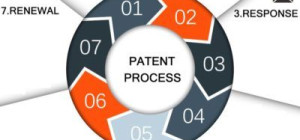Nobody wishes for disasters to occur – they just happen. Which is why, it always pays to be prepared. Fire is a major concern while erecting temporary outdoor shelters. While you cannot predict when or how a fire might break out, you can certainly take measures to lessen the damage it will cause – and one of them is to ask for a fire certificate with your custom canopy tent.
According to a report by National Fire Protection Association (NFPA), local fire departments responded to nearly 306,000 brush, grass, and forest fires between 2011-15 in USA; that’s around 840 fires each day!
The leading causes included arson, open burning of waste, smoking material, and faulty electrical and utility lines. These numbers alone outline the importance of using a flame retardant canopy for open-air events, so that your guests remain safe and shielded in case of a mishap.
Flame resistant vs. Flame retardant – What’s the difference?
A flame resistant textile is made of non-flammable materials that prevent fire. They resist fire due to their inherent chemical composition. Such fabrics prevent fires from spreading and do not drop or melt even in close proximity to the flame.
Also, these fabrics extinguish on their own once the ignition source is removed. This means that if a canopy is flame resistant, it will stop burning as soon as the source of the fire is removed. However, despite great difficulty, flame resistant fabrics will burn.
A fire-resistant fabric should:
- Stop burning: Without a continuous source of fire around, the fabric must stop burning. The chemical composition of the fabric prevents it from catching fire on its own.
- Have a slow burning speed: This is an extension of the above mechanic. A good fire-resistant fabric must burn with minimal speed – a trait facilitated by the fabric’s individual fibers.
- Create minimal ash: Burn resistance not only leaves more fabric intact, it also reduces the ash formed as a by-product of ignition.
Flame retardant fabrics, on the other hand, have to be chemically treated to facilitate slow burning and self-extinguishment. Regardless of the manufacturing fabric, a fire retardant material has to be exposed to chemicals to change its fire-affinity.
Ensure that the canopy or tent tops supplied to you are made of flame resistant fabric. In fact, your outdoor event tent should adhere to the NFPA 701 Standards as well as the mandates set down by local and state governing bodies.
Is my custom canopy tent flame resistant?
The flame-resistance of a custom canopy tent fabric can be measured by subjecting it to standardized tests that grade each attribute on a pass-fail basis such as the CPAI-84 and NFPA 701 certifications.
NPFA’s 701 Standard
In the USA, NFPA’s 701 Standard: Methods of Fire Tests for Flame Propagation of Textiles and Films Test must be passed by a fabric to become certified as flame-resistant.
The 701 Flame Test measures:
- Flammability of a material when exposed to ignition sources for 12 seconds,
- Length of the material charred,
- Time duration for which the material burned, and;
- Residue after the fire was put out.
IFAI’s CPAI-84 Standard
The CPAI-84 certification is issued by Industrial Fabrics Association International (IFAI), earlier known as the Canvas Products Association International (CPAI).
The CPAI-84 tests the flammability of recreational tents by measuring char length and mass lost after-flame. These tests are run in sets of four to avoid any accidental oversights in the testing data. If a material fails the upper threshold of any criterion during any of the four tests, it fails the entire certification and needs to be reassessed.
Why do certifications matter?
So your tent is not susceptible to fire? Great!
But why do you need a certificate? This is because each local and state governing body has laid down different fire codes, the intricacies to which differ from area to area.
Although NFPA 701 is the national standard, it’s not really a law or a regulation. The state and local governments reserve the right to make and enforce laws in this regard. While some governing bodies accept the 701 standard, others have devised their own standards for draperies used in public spaces.
For instance, in California, fabrics intended for outdoor usage should be registered with the State Fire Marshal, documenting compliance with Title 19 of the California Code of Regulations. Similarly, New York City requires certification that the fabric adheres to requirements outlined in Title 27 of the New York Administrative Code. The State of New York and Commonwealth of Massachusetts, on the other hand, accept NFPA 701 Standard.
With Fire-Resistance Certification:
- It becomes easy to obtain permits
As the testing procedures are strict, acquiring certifications makes you eligible in equal or less-strict areas for setting up tents and gazebos. It also becomes easy to obtain permits for pitching your tent from the concerned authorities.
- You can control quality
A fire-resistant certification means that you’re providing top-notch quality products to your customer. With this, you can stay one step ahead of your competition without compromising on your product and brand credibility.
- You ensure safety of your guests
How will you plan your event if the safety of your guests looms at the back of your mind? With the right safety documents in place, you can organize a successful event without having to worry about the safety of your guests, stock, and equipment.
- Reap long-term benefits
Non-certified pop-ups and custom canopy tents might appear tempting as they are relatively cheaper, but just imagine the financial implications if you’re fined by governing authorities, or worse, if your tent burns down during an unfortunate fire?
Always purchase outdoor shelters from certified buyers to benefit from long-term returns on your investment.
How to prevent fire damage?
The easiest method to avoid fire is avoiding flammable sources altogether. Our tent assembly instruction manuals clearly state that open flames such as bonfires, candles, stoves, and other burning items should not be kept underneath the tent. Even the smallest ember or a flame from still-burning cigarette butt can land on the fabric or on the guy ropes, causing ignition.
If a fire does break out, remove the tent fabric. Evacuate the tent immediately and call the fire department. Do not re-enter a burning tent.










